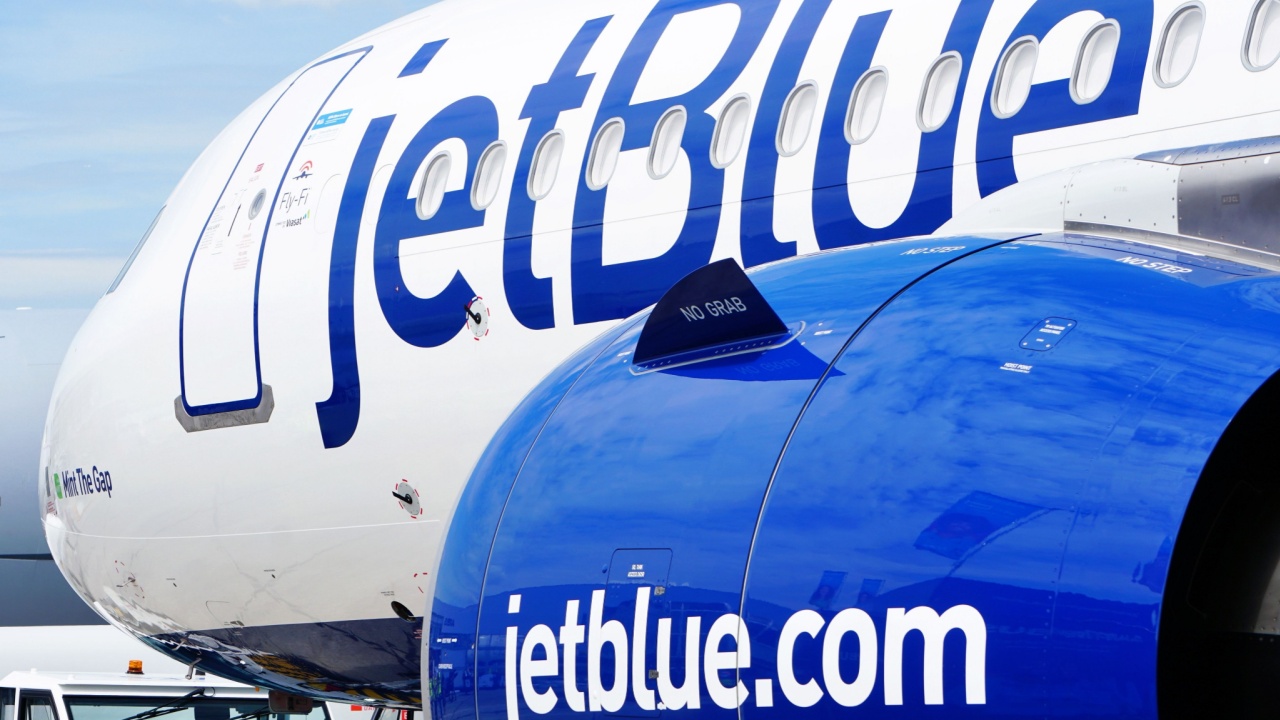JetBlue (NASDAQ:JBLU) stock was flying high on Tuesday, as one of the day’s biggest gainers, up more than 13% to almost $7 per share. It had been up more than 20% at its high point on Tuesday.
While the earnings numbers weren’t great for the struggling airline, they were far better than analysts had expected.
JetBlue saw revenue decline 7% in Q2 year-over-year to $2.4 billion, but it was better than Wall Street analysts projected. Net income was just $25 million, or 7 cents per share, but the consensus among analysts called for a 13 cents per share loss. Still, net income was off 82% from the same quarter a year ago.
With Tuesday’s gains, JetBlue stock is up about 24% year-to-date (YTD). Can it maintain its momentum?
JetBlue jets forward after merger with Spirit is rejected
JetBlue hit some turbulence earlier this year when its bid to acquire low-cost carrier Spirit Airlines was rejected by a federal judge. JetBlue had argued that the combination of the two mid-sized airlines would create a larger player to compete with the big three, thus increasing competition in the space. But the judge saw it differently, rejecting the proposal because it would take a low-cost option off the market.
This forced JetBlue to forge ahead, under new CEO Joanna Geraghty, with a new strategic plan called JetForward to drive profitability.
The JetForward strategy is focused on driving efficiencies, cutting costs, and focusing on the most profitable networks.
“We are actively reinvesting in our core geographies in New York, New England, Florida and Puerto Rico, while exiting routes and BlueCities that don’t meet our financial hurdle rate,” Marty St. George, JetBlue’s president, said. “As we progress through the second half of the year, we’ll be announcing additional initiatives designed to further enhance our customer value proposition, close the gap in our product offering to our peers and drive significant financial benefit.”
The company laid out four pillars of JetBlue’s strategy to generate $800 million to $900 million incremental earnings from 2025 to 2027. They include:
- Improving on-time performance through various means, including investments in tools and technology, and improving customer service;
- Refocusing its network around leisure flying originating in New York, New England, Florida and Latin geographies, while exiting 15 cities and more 50 route unprofitable routes;
- Enhancing its offerings and loyalty perks to attract customers that value premium experiences and optimizing product merchandising to maximize revenue potential; and
- Driving $175 million in structural cost savings through 2027 through data-science optimization, new technology investments, and labor and infrastructure productivity. It also plans to defer $3 billion of capital expenditures on new jets through 2029 to improve its cash flow and restore its balance sheet.
“While many of these underlying initiatives will take time to ramp to their full potential, with the strong foundation of JetForward, we are poised to generate $800 – $900 million of incremental EBIT from 2025 through 2027 and expect the benefit to be realized evenly over those three years,” Ursula Hurley, JetBlue’s chief financial officer, said.
Is JetBlue a buy?
Tuesday’s surge in stock price had more to do with excitement about the plan than its tangible results. Not only were revenue and earnings down in the quarter, but its outlook for the rest of the 2024 was not great.
JetBlue is calling for available seat miles to be down 3% to 6% in Q3 and 2.5% to 5% for the full fiscal year. Revenue is anticipated to be off 1.5% to 5.5% in Q3 and 4% to 6% for the full year.
Meanwhile, the cost per available seat mile is expected to be up 6% to 8% in Q3 and 6.5% to 8.5% for the full fiscal year. Finally, capital expenditures are projected to be $365 million in Q3 and $1.6 billion for the fiscal year.
New leadership seems to be on the right path, but it won’t move the needle on the stock any time soon. The company is barely profitable, and it still must execute upon these plans.
This is a long term fix worth keeping an eye on, but JetBlue stock is probably not one that’s going to move much higher in the near-term, particularly after Tuesday’s big jump.






